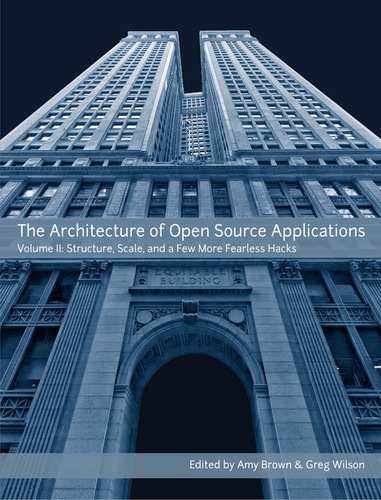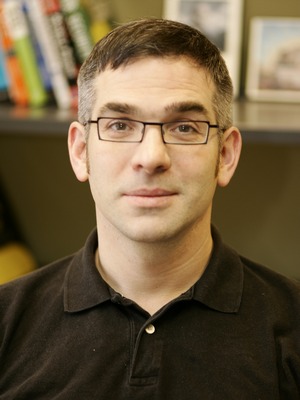
The Architecture of Open Source Applications, Volume II: Structure, Scale, and a Few More Fearless Hacks
In this second volume, the authors of twenty-four open source applications explain how their software is structured, and why. From web servers and compilers to health record management systems, they are covered here to help you become a better developer.
Publication date: 08 May 2012
ISBN-10: n/a
ISBN-13: 9781105571817
Paperback: 390 pages
Views: 11,705
Type: Book
Publisher: Lulu.com
License: Creative Commons Attribution 3.0 Unported
Post time: 16 Dec 2016 02:10:00
The Architecture of Open Source Applications, Volume II: Structure, Scale, and a Few More Fearless Hacks
 In this second volume, the authors of twenty-four open source applications explain how their software is structured, and why. From web servers and compilers to health record management systems, they are covered here to help you become a better developer.
In this second volume, the authors of twenty-four open source applications explain how their software is structured, and why. From web servers and compilers to health record management systems, they are covered here to help you become a better developer.
Publication date: 08 May 2012
ISBN-10: n/a
ISBN-13: 9781105571817
Paperback: 390 pages
Views: 11,705
Document Type: Book
Publisher: Lulu.com
License: Creative Commons Attribution 3.0 Unported
Post time: 16 Dec 2016 02:10:00
Share — copy and redistribute the material in any medium or format
Adapt — remix, transform, and build upon the material for any purpose, even commercially.
The licensor cannot revoke these freedoms as long as you follow the license terms.
Click here to read the full license.
Brown and Wilson wrote:In the introduction to Volume 1 of this series, we wrote:
"Building architecture and software architecture have a lot in common, but there is one crucial difference. While architects study thousands of buildings in their training and during their careers, most software developers only ever get to know a handful of large programs well… As a result, they repeat one another's mistakes rather than building on one another's successes… This book is our attempt to change that."
In the year since that book appeared, over two dozen people have worked hard to create the sequel you have in your hands. They have done so because they believe, as we do, that software design can and should be taught by example—that the best way to learn how think like an expert is to study how experts think. From web servers and compilers through health record management systems to the infrastructure that Mozilla uses to get Firefox out the door, there are lessons all around us. We hope that by collecting some of them together in this book, we can help you become a better developer.
Tweet
About The Editor(s)
Greg is the founder of Software Carpentry, a crash course in computing skills for scientists and engineers. He has worked for 30 years in both industry and academia, and is the author or editor of several books on computing, including the 2008 Jolt Award winner Beautiful Code and the first two volumes of The Architecture of Open Source Applications. Greg received a PhD in Computer Science from the University of Edinburgh in 1993.

Greg is the founder of Software Carpentry, a crash course in computing skills for scientists and engineers. He has worked for 30 years in both industry and academia, and is the author or editor of several books on computing, including the 2008 Jolt Award winner Beautiful Code and the first two volumes of The Architecture of Open Source Applications. Greg received a PhD in Computer Science from the University of Edinburgh in 1993.
